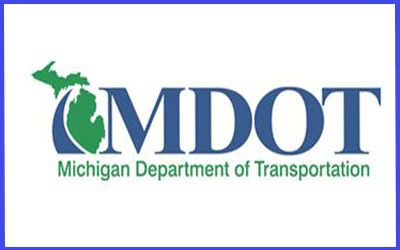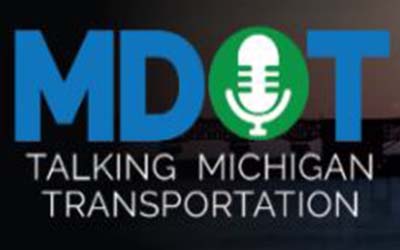
by orionontv | Apr 15, 2025 | Transportation
MDOT reminds drivers to avoid toll road scam
Fast facts:
- The Michigan Department of Transportation (MDOT) is reminding drivers to follow tips shared by Michigan Attorney General Dana Nessel to avoid toll road scams.
- A recent scam shared with MDOT, includes an imposter government website, mimicking MDOT’s official site.
- MDOT does not operate toll roads and will not solicit payment for bridge tolls via text.
LANSING, Mich. – The Michigan Department of Transportation (MDOT) is reminding drivers to follow tips and guidelines issued by Michigan Attorney General Dana Nessel, helping Michiganders to avoid falling victim to recent tolling and government imposter scams.
MDOT officials have been made aware of the newest toll road scam, including an imposter government website, which mimics MDOT’s official site, but carries a different URL address. MDOT reminds all drivers that Michigan does not have toll roads and will never solicit payment via text or include threatening verbiage to avoid late fees or harsher penalties.
Attorney General Nessel also is reminding consumers that government agencies:
- Will not request personal information through email, over the phone or text.
- Will never demand money through email, over the phone or text. They will mail you a notice and offer payment options.
- Do not ask for or take payment by prepaid gift card, wire transfer, cryptocurrency, or a payment app.

This screenshot is being included in a recent round of toll road scam attempts, mimicking MDOT’s website, but featuring a different URL address.

by orionontv | Apr 14, 2025 | Transportation
FOR IMMEDIATE RELEASE MEDIA CONTACT
April 14, 2025 Diane Cross
CrossD@Michigan.gov
Pontiac Woodward Loop initiative in Oakland County explained in new MDOT video
PONTIAC, Mich. – The Michigan Department of Transportation has posted a new video to its YouTube channel to show the public what’s planned for the Woodward Loop Roadway Project that is aimed at enhancing the safety, connectivity and livability of the Pontiac area. “Across Michigan, we are moving dirt and fixing the damn roads to grow our economy, helping Michiganders go to work, drop their kids off at school and run errands safely,” said Gov. Gretchen Whitmer. “By the end of this construction season, we will have fixed, repaired or replaced nearly 24,500 lane miles of roads and 1,900 bridges, supporting thousands of good-paying, local jobs without raising taxes by a dime. This year, let’s build on our momentum to pass a bipartisan local road funding plan so we can keep fixing our damn roads and creating good-paying, local jobs.”
Currently, Pontiac has a one-way ring road encircling the downtown core that acts as a barrier between the downtown and surrounding neighborhoods, discouraging economic development and pedestrian activity. The proposed improvements would restore two-way traffic to the loop and create pedestrian and bicycle access to important regional assets, including the Clinton River Trail, the new Oakland County offices and the rail bus station.
Planned changes would occur on M-1 (Woodward Avenue), M-59 (Huron Street), and Parke Street.
MDOT officials believe this project will significantly enhance the community and looks forward to a more connected and accessible future for Pontiac. For comments and questions, please contact the project team at MDOT-Metro-WoodwardLoop@Michigan.gov.

by orionontv | Apr 10, 2025 | Transportation
Work progresses on the final phase of rebuilding I-696
On this week’s Talking Michigan Transportation podcast, a conversation with Brian Travis, the Michigan Department of Transportation (MDOT) project manager overseeing the rebuilding of the central segment of I-696.
The work, which began in March and will continue through most of 2027, involves closing the eastbound lanes of I-696 from M-10 and Lahser Road east to I-75.
 Travis explains that this is the last of three phases of the “Restore the Reuther” project, a $275 million rebuilding of the freeway. In 2019, the state completed work along the easternmost portion, along with the western end in 2023 and 2024. Travis explains that this is the last of three phases of the “Restore the Reuther” project, a $275 million rebuilding of the freeway. In 2019, the state completed work along the easternmost portion, along with the western end in 2023 and 2024.
The conversation also includes an update on MDOT’s second flex route, this one on I-96 in Oakland County. The project is nearing completion as crews prepare for the use of ramp metering to regulate the flow of traffic to the freeway.
A video explains the benefits of the flex route and ramp metering. |
|
|

by orionontv | Apr 3, 2025 | Transportation
MDOT crews, other agencies respond to historic ice storm
A few days after a massive ice storm rocked northern lower Michigan, many thousands remain without power while crews from power companies, the Michigan Department of Transportation (MDOT) and other state and local agencies continue the cleanup and rebuilding process.
 Bill Wahl, MDOT North Region associate engineer for operations, who is coordinating department efforts, joins the podcast to provide an update on the recovery. Bill Wahl, MDOT North Region associate engineer for operations, who is coordinating department efforts, joins the podcast to provide an update on the recovery.
 Also joining is James Lake, MDOT North Region media relations specialist, who assists the Mackinac Bridge Authority (MBA) with communications. He talks about why falling ice necessitated closing the bridge three times in three days, including a record 30-hour period. Also joining is James Lake, MDOT North Region media relations specialist, who assists the Mackinac Bridge Authority (MBA) with communications. He talks about why falling ice necessitated closing the bridge three times in three days, including a record 30-hour period.
Wahl and Lake grew up in the region and neither has seen anything like this ice storm and the resulting destruction. Wahl recounts utility workers who had been on power-restoration projects following hurricanes in the Southeast saying the scenes are as bad or worse as anything they’ve seen. |
 Wahl says crews from several counties to the south, including Kent, Ottawa, Mason, Missaukee, Muskegon, Roscommon, Iosco and Wexford, were helping to clear roads. While the Mackinac Bridge re-opened Thursday morning, April 3, after a 30-hour closure, officials will continue to closely monitor conditions for falling ice. Wahl says crews from several counties to the south, including Kent, Ottawa, Mason, Missaukee, Muskegon, Roscommon, Iosco and Wexford, were helping to clear roads. While the Mackinac Bridge re-opened Thursday morning, April 3, after a 30-hour closure, officials will continue to closely monitor conditions for falling ice.
The MBA posted a video message on X from Bridge Director Kim Nowack about the falling ice, along with some photos from the bridge. More videos of falling ice that prompted the current closure were also posted on X.
The bridge has closed roughly 30 times in the past 30 years, and the average closure duration is several hours. More frequently asked questions about falling ice and other topics are available on the MBA website. |
|
|

by orionontv | Mar 31, 2025 | Transportation
Year’s first Adopt-A-Highway pickup starts Saturday, April 5
Fast facts:
- The first Michigan Department of Transportation (MDOT) Adopt-A-Highway pickup of the year is April 5-13 for the Lower Peninsula.
- The first pickup for the Upper Peninsula will be from May 10 to 18.
- Sections of highway are still available to adopt. Go to Michigan.gov/AdoptAHighway for more information.
LANSING, Mich. - It’s a spring event as predictable as the return of the robins: volunteers will hit the roadsides across lower Michigan beginning Saturday as Michigan Department of Transportation (MDOT) Adopt-A-Highway (AAH) groups pick up litter on state highways from April 5-13.
The year’s first AAH pickup for the Upper Peninsula will be later (May 10-18) when spring has had more time to set in for the northern part of the state.
“Each year, our Adopt-A-Highway volunteers show their dedication to their communities by keeping the roadsides clean,” said State Transportation Director Bradley C. Wieferich. “These thousands of groups make a huge difference every year. Please help them stay safe while they’re out there. Stay alert for the volunteers and drive cautiously during the pickup periods.”
The AAH program began in Michigan in 1990. Today, 35 years later, around 2,600 groups have adopted more than 6,000 miles of state highway. Last year alone, these volunteers collected 36,000 bags of trash.
Volunteers pick up litter three times each year. Statewide, there will be a summer pickup from July 12 to 20 and a fall pickup from Sept. 20 to 28.
AAH groups wear high-visibility, yellow-green safety vests required by federal regulations when working within a highway right of way. MDOT provides free vests and trash bags, and arranges to haul away the trash. Volunteers include members of various civic groups, businesses and families. Crew members have to be at least 12 years old, and each group must number at least three people.
Sections of highway are still available for adoption. Groups are asked to adopt a section for at least two years. AAH signs bearing a group’s name are posted along the stretch of adopted highway. There is no fee to participate. Go to www.Michigan.gov/AdoptAHighway for more information.
Several landfills in southwestern Michigan do their part to help the AAH program. Westside Landfill in St. Joseph County, C&C Landfill in Calhoun County, Orchard Hill Landfill in Berrien County, Southeast Berrien County Landfill near Niles, and Republic Services Gembrit Circle Transfer Station in Kalamazoo have all agreed to accept trash generated by the three annual AAH pickups at no charge. In exchange, these businesses receive a sign recognizing their support.

by orionontv | Mar 31, 2025 | Transportation
MDOT Paint the Plow program returns to brighten Michigan’s roads
LANSING, Mich. – The Michigan Department of Transportation (MDOT) is now accepting applications for the 2025-2026 Paint the Plow program. This program offers a unique opportunity for MDOT to partner with area schools, using students’ creativity to communicate safe winter driving practices for all Michigan residents.
The Paint the Plow program is open to all Michigan high schools, including technical and vocational programs. Students are invited to submit a creative and original design reflecting their individual school, while promoting a selected safety theme. This year’s safety theme is “Give plows space; it’s not a race.”
The safety theme reminds everyone that driving safely on winter roads is crucial to preventing crashes and ensuring road user safety. Snow and ice can make roads slippery, reducing traction and increasing stopping distances. Slowing down gives drivers more time to react to changing conditions and helps maintain control. It’s especially important to be cautious around snowplows, which travel at reduced speeds and have limited visibility. By slowing down and giving plows plenty of space, drivers can help keep Michigan’s roads safer for everyone.
MDOT will accept Paint the Plow design applications through Friday, May 16. Selected schools will be notified before the end of the 2025 school year and arrangements will be made for the delivery of their plow blade in the fall. Depending on location throughout the state, schools will have approximately six weeks to complete their design before MDOT staff return for the completed plow blade in time to ready trucks for the winter maintenance season. Painted plow blades will be visible along various state trunklines (I, M and US routes) in Michigan through the winter.
Interested schools can visit www.Michigan.gov/PaintThePlow for more information and to submit their design.

Superior Region’s Newberry High School designed this plow blade for last year’s Paint the Plow program.

Bay Region’s Heritage High School painted this plow for the 2024-2025 season.

University Region’s Western High School painted this snowplow blade for the 2024-2025 Paint the Plow program.









 Travis explains that this is the last of three phases of the
Travis explains that this is the last of three phases of the  Bill Wahl, MDOT North Region associate engineer for operations, who is coordinating department efforts, joins the podcast to provide an update on the recovery.
Bill Wahl, MDOT North Region associate engineer for operations, who is coordinating department efforts, joins the podcast to provide an update on the recovery. Also joining is James Lake, MDOT North Region media relations specialist, who assists the Mackinac Bridge Authority (MBA) with communications. He talks about why falling ice necessitated closing the bridge three times in three days, including a record 30-hour period.
Also joining is James Lake, MDOT North Region media relations specialist, who assists the Mackinac Bridge Authority (MBA) with communications. He talks about why falling ice necessitated closing the bridge three times in three days, including a record 30-hour period.
 Wahl says crews from several counties to the south, including Kent, Ottawa, Mason, Missaukee, Muskegon, Roscommon, Iosco and Wexford, were helping to clear roads. While the Mackinac Bridge re-opened Thursday morning, April 3, after a 30-hour closure, officials will continue to closely monitor conditions for falling ice.
Wahl says crews from several counties to the south, including Kent, Ottawa, Mason, Missaukee, Muskegon, Roscommon, Iosco and Wexford, were helping to clear roads. While the Mackinac Bridge re-opened Thursday morning, April 3, after a 30-hour closure, officials will continue to closely monitor conditions for falling ice.



